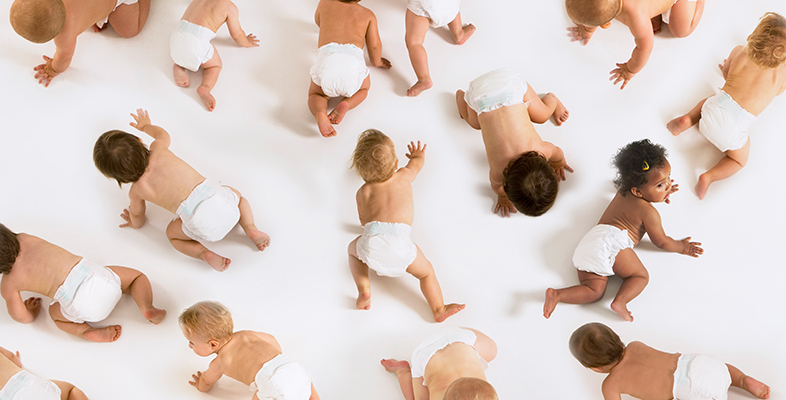3.1 Affordances in the environment
‘Affordance’ is a useful term to consider when looking at how the environment can provide for good sensory development in young children.
The term was coined by James J. Gibson (1904–1979); he was an American psychologist famous for his research on how we come to understand the world through our senses. Keenan and Evans (2009) define affordances as ‘the properties of objects that offer the individual the potential to interact’, and they describe how young children ‘by moving about and exploring their environment, … come to understand which objects are best grasped, squeezed, tasted, or avoided’ (p. 135).
With this in mind, you will now look at some everyday scenarios that children may engage in and consider the affordances offered by such environments.
Activity 1
Have a look at the six images in the link below of young children in both the home and the outdoor environment. They are all engaged in everyday activities that involve them using their different senses.
Open the link below in a new tab or window by holding down Ctrl (or Cmd on a Mac) when you click on the link so you can view them alongside Activity 1.
Images for Activity 1 [Tip: hold Ctrl and click a link to open it in a new tab. (Hide tip)]You can see how the affordances provided for them in each environment give opportunities for their body systems and senses to work together to support the sharpening of their senses and therefore promote their overall growth and development.
Look carefully at the images and consider all the different senses that the child is using and how this may be impacting their growth and development. The first image has been done for you as an example:
Image 1
Sight: The child may be looking at their own reflection in the puddle or they may be watching the pattern of the raindrops as they fall on the surface of the water.
Hearing: The child may be listening to the sounds the rain makes as it falls (pitter, patter, pitter, patter) or the sound they make as they jump (splash!) in the puddles.
Touch: The child is learning to distinguish between wet and dry, cold and warm, the hard, gritty surface of the path and how quickly their hand can move through the smooth surface of the water.
Smell: Everything smells different in the rain, the fresh aroma of rain on the plants or the damp smell of wet clothes.
Taste: Have you noticed how sometimes children poke out their tongue to catch the rain in their mouth?
Vestibular sense: Notice how the child can balance, squatting down to investigate the puddle.
Proprioception: The child has a sense of the space they take up in the vast outdoor environment. They have chosen to place themselves in the middle of the puddle, they can see the rain coming from on high, they are gently moving the surface of the water with one hand as they explore.
Now, look at images 2–6 and think about how the child might be using each of their senses.
